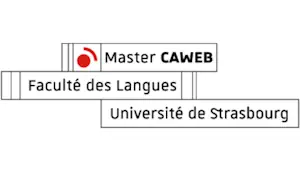What Is Localization and Internationalization in UX? 4 Key Concepts You Should Know

As digital products reach users across the globe, creating a great user experience (UX) means more than good design: It means designing for cultural and linguistic diversity. That’s where localization in UX and internationalization come into play.
For professionals aiming to work in international environments, understanding these concepts is increasingly valuable. Let’s explore what they mean and how they connect to the skills you can build through a program like CAWEB.
1. Internationalization in UX: Designing for Flexibility
Before you localize, you need to internationalize. This means building products that can easily be adapted to different languages and cultures without major design or code changes.
Key features of internationalization in UX:
- Layouts that allow for text expansion (e.g., German vs. English)
- Compatibility with different character sets
- Right-to-left language support
- Neutral, globally recognizable icons
In short, internationalization sets the stage for global usability.
2. Internationalization in Design: Preparing Visuals for Global Audiences
While internationalization in UX focuses on structure, internationalization in design deals with the look and feel of your product across cultures.
You might need to:
- Avoid color associations that vary culturally
- Choose imagery that doesn’t rely on regional context
- Design navigation that feels intuitive regardless of region
This visual layer ensures that your product feels natural to users from different backgrounds, even before any content is localized.
3. Localization in UX: Making It Truly Local
Once a product is internationalized, localization in UX adapts it to specific cultural and linguistic needs.
This involves:
- Translating content with the right tone and context
- Adapting date formats, currency, and measurements
- Using culturally relevant visuals or symbols
Localization ensures the user feels that the product was made for them, not just translated.
4. Internationalization Strategy: Connecting the Dots
An internationalization strategy aligns teams (design, dev, translation) from the beginning to ensure the product can scale globally.
Strong strategies:
- Integrate localization tools into the workflow
- Include cultural research in the design phase
- Prioritize collaboration across roles
This approach improves efficiency and ensures consistency, two things employers value highly in UX professionals.
Why This Matters for Your Career
If you come from a background in languages, communication, or design, understanding localization and internationalization gives you a powerful edge in the UX job market.
- It shows you’re ready to work on global products.
- It bridges language skills with technical know-how.
- It adds real value to companies expanding internationally.
UX + Intercultural Communication at CAWEB
The CAWEB Master’s program at the University of Strasbourg is one of the few programs that combines:
- UX and web design
- Intercultural communication and multilingual web content
- International project management
You’ll learn how to design digital experiences that are technically robust and culturally informed: the kind of profile global companies look for in international UX and communication teams.
Where Can This Take You?
Graduates of CAWEB are well-prepared for roles such as:
- UX/UI designer in international environments
- Multilingual content strategist
- Digital communication specialist for global brands
- Web project manager with intercultural expertise
These roles are increasingly in demand as companies seek to create digital products that resonate across languages, markets, and cultures.
Ready to Go Global?
If you’re excited by UX, languages, and working across cultures, CAWEB might be the next step in your journey. It’s a program built for curious, creative people who want to stand out in a global market.
Learn more about the CAWEB Master’s in Multilingual Web Communication and explore how you can build a career at the intersection of UX, localization, and global strategy.
Discover the CAWEB Master’s in Multilingual Web Communication and see how you can build a career at the crossroads of UX, intercultural communication, and global digital strategy.
Written by Lucile Vuillemin






